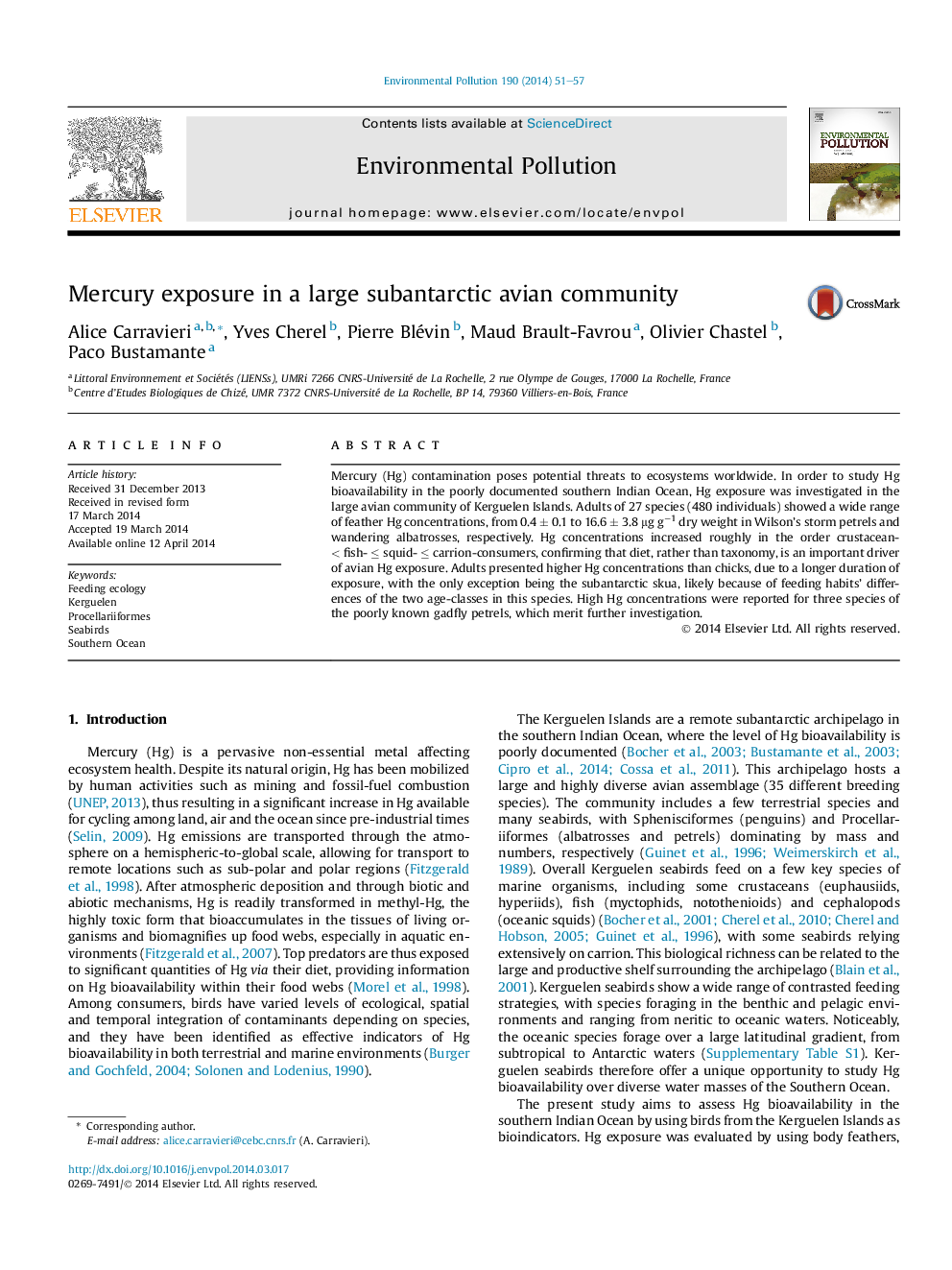| Article ID | Journal | Published Year | Pages | File Type |
|---|---|---|---|---|
| 4424312 | Environmental Pollution | 2014 | 7 Pages |
•Feather Hg concentrations were measured in 27 sympatric subantarctic bird species.•Inter-specific variation in Hg exposure depends on feeding habits, not taxonomy.•Hg concentrations were higher in adults than chicks due to longer exposure duration.•Hg is highly bioavailable in the Southern Ocean, which merits further investigation.
Mercury (Hg) contamination poses potential threats to ecosystems worldwide. In order to study Hg bioavailability in the poorly documented southern Indian Ocean, Hg exposure was investigated in the large avian community of Kerguelen Islands. Adults of 27 species (480 individuals) showed a wide range of feather Hg concentrations, from 0.4 ± 0.1 to 16.6 ± 3.8 μg g−1 dry weight in Wilson's storm petrels and wandering albatrosses, respectively. Hg concentrations increased roughly in the order crustacean- < fish- ≤ squid- ≤ carrion-consumers, confirming that diet, rather than taxonomy, is an important driver of avian Hg exposure. Adults presented higher Hg concentrations than chicks, due to a longer duration of exposure, with the only exception being the subantarctic skua, likely because of feeding habits' differences of the two age-classes in this species. High Hg concentrations were reported for three species of the poorly known gadfly petrels, which merit further investigation.
